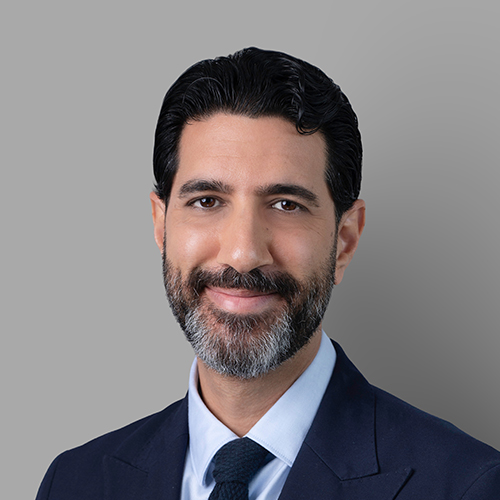The UAE’s office market is experiencing a surge in demand for serviced office space as businesses seek flexible, cost-effective solutions in one of the world’s tightest markets.
Unlike global peers, where flexible offices are often used to counter high vacancy or encourage employees back into the workplace, the UAE story is different: demand is being driven by scarcity. With Grade A occupancy in Dubai at 94% and expected to surpass 95% by year-end, companies are turning to serviced models not because they can’t fill offices, but because they can’t find them.
Global Alignment, Local Divergence
Cushman & Wakefield’s Global Trends in Flexible Office 2025 shows just how integral flex has become to corporate strategy. More than half of global occupiers already use flexible space, with 17% planning to expand usage. In EMEA, 61% of occupiers incorporate flex into their portfolios, though many are currently rebalancing between growth and contraction.
In the UAE, the picture diverges. Occupiers are not trimming back; they are leaning into flex as a structural response to undersupply. Rather than filling vacant space, serviced offices in Dubai and Abu Dhabi enable rapid market entry, speed, and scalability. Flexible space currently accounts for about 1.5% of total office stock, supported by more than 150 operators across the two cities - a relatively modest share compared to mature markets, but one that is growing quickly.
Fit-out costs add another dimension. Globally, tenant capital expenditure has risen sharply, with build-out costs often exceeding $150 per square foot and furnishings adding another 10–40%. Serviced offices eliminate this burden. Providers absorb the upfront expense, delivering fully fitted space that allows tenants to be operational from day one. For new entrants to the UAE, this can mean the difference between waiting months for approvals and starting immediately.
The Shifting Occupier Base
Flexible space has long been the preserve of startups and SMEs, often taking units of around 1,000 sq ft to house 5–10 employees. But this is changing. Across EMEA, managed solutions of 10,000–30,000 sq ft are now common, reflecting corporates’ need for customised space at scale. The UAE is following suit. Multinationals that once viewed serviced offices as too small or too generic are now seeking turnkey solutions that match Grade A standards while offering the flexibility to expand.
Recent activity underscores this trend. Indian operator CorporateEdge has entered Dubai with its first location at Emaar Square, joining a wave of expansion that includes new floors taken by RICE, Flowork and Space1. These operators are targeting not just startups, but larger corporates, offering premium fit-outs, concierge-style services, and wellness-inspired environments designed to attract enterprise tenants. Their arrival highlights how the UAE is becoming a testing ground for international flex brands seeking to capture regional demand.
Collaboration is another global driver. Cushman & Wakefield research shows double-digit growth in meeting room bookings across all regions, underlining the office’s role as a place for teams to connect. UAE operators are responding with more communal areas, shared amenities, and event space, complementing the privacy of fitted suites.
Importantly, it is not only third-party operators driving this shift. Landlords themselves are increasingly delivering fitted and furnished suites, often branded as business centers or premium suites. In Dubai International Financial Centre (DIFC), offerings such as Burj Daman the Index Tower, Central Park Towers, ICD Brookfield Place, and the DIFC Business Centre provide ready-to-occupy space directly from the respective landlord. Similar models have been launched in Media City and Dubai Science Park under the DQuarters brand. These initiatives have been largely successful, demonstrating that landlords see flex formats as a permanent part of their leasing strategy rather than a short-term response to market cycles.
A recent example is HQ by Rove in Marasi Bay, developed by IRTH Group in partnership with Cushman & Wakefield Core. Branded under Rove Hotels, the project combines hospitality-led service with modular office design and a full-service concierge desk. By embedding amenities such as wellness spaces, communal lounges, rooftop work pods, and on-demand business support into a fitted office model, HQ by Rove illustrates how landlord-led flex is evolving into a lifestyle-driven workplace concept designed to appeal to both SMEs and corporates.
A Structural Feature of the Market
Globally, the flex sector is moving from stopgap to strategy, with landlords and operators experimenting with new management agreements and even launching branded platforms. The UAE is beginning to echo this shift, with developers embedding serviced space directly into new Grade A towers.
The wider ecosystem reinforces this momentum. More than 68% of upcoming office stock in Dubai and Abu Dhabi is within freezones, where regulatory advantages, sector clustering, and high occupier churn create natural demand for flexible formats. With global names such as WeWork, Servcorp and Regus competing alongside local players like RICE, Flowork, and Unbox, the range of options has broadened considerably.
What sets the UAE apart is the context: a high-occupancy environment with limited new supply. Flexible offices here are not a temporary solution to fill empty space — they are enabling growth in one of the most competitive office markets worldwide. As new commercial developments rise, more will integrate flex as a core component. For occupiers, that means faster routes to market; for landlords, a tested model to capture demand; and for investors, a signal that serviced offices in the UAE are not cyclical but structural.





